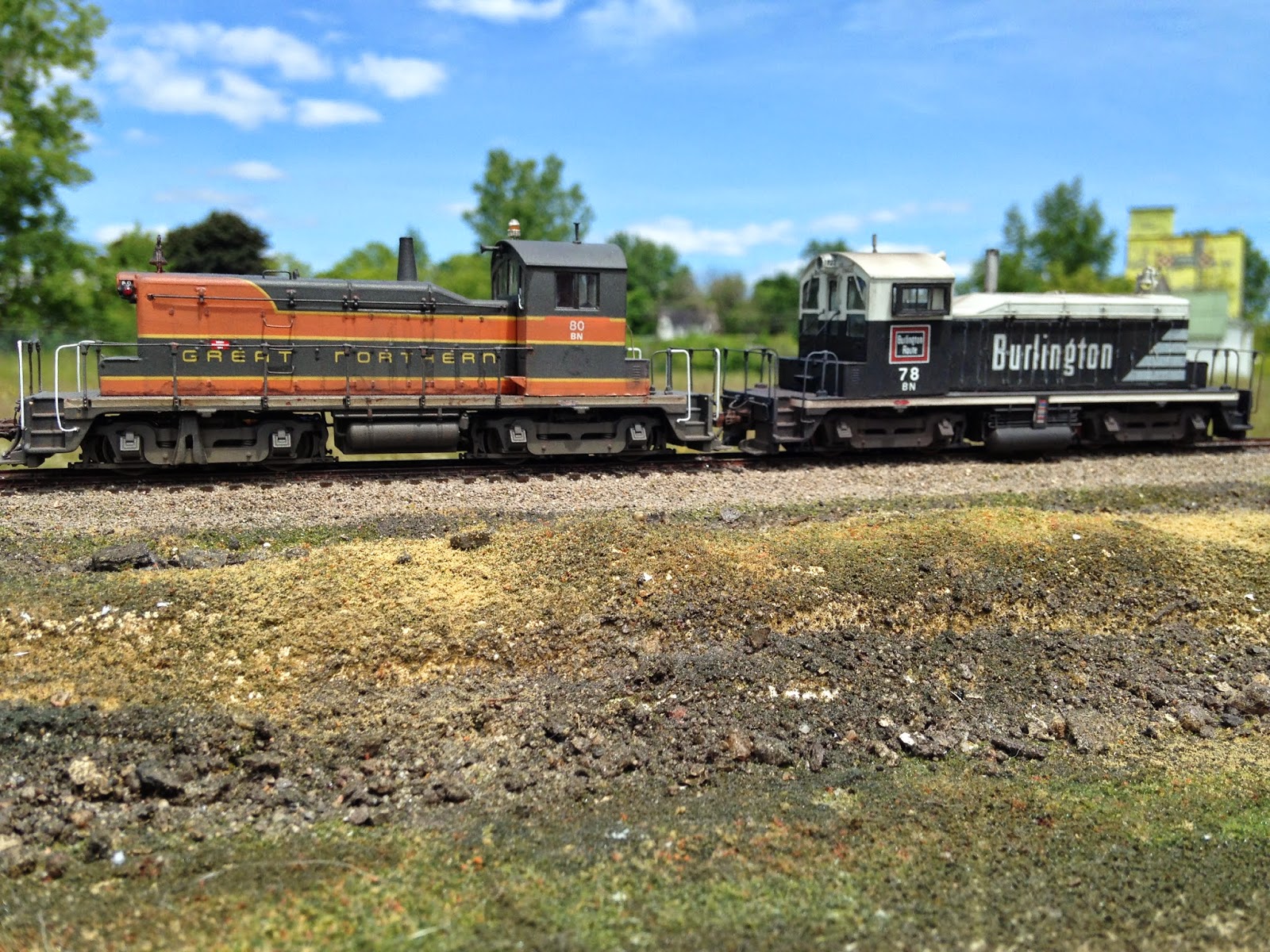Here we have an Atlas Master Series GP38, modified and painted to match prototype photos of a Baltimore and Ohio unit from the early 1970s. Many thanks to the owner of this unit, Charles, for his permission to blog about this royal blue unit.
This would have been the final iteration of the B&O paint scheme before being absorbed into the Chessie System's bright yellow paint. Thus, the unit was to have a haggard appearance, and be adorned with all the modifications made to the unit throughout it's service life. Most notable among these differences is the dynamic brake blister, with it's distinctive lack of taper at the leading edge. This was obtained by splicing an angled filter box to the as-supplied dynamic brake section.
The addition of a Details West brass horn and whip antenna, etched steel wind deflectors, train line hose and Kadee #158 couplers compliments the hand-formed coupler cut bars. These had the large yellow yokes soldered to faithfully reproduce the modifications made to the prototype unit. A Details West speed recorder with #24 gauge single-stranded wire was used to decorate the Blomberg-B sideframe on the fireman's side of the unit.
Polly-S acrylic "royal blue" and Testor's acrylic semi-gloss black, along with Microscale decals, were used to decorate this unit. The prototype unit had some very distinctive weathering patterns that I wanted to reproduce. These included the rust pattern on the step kick plates, probably from the crews striking their steel-toed boots while climbing the stairs; this was accomplished using dry-brushing and Prisma-color pencils. The same technique was used for the wear along the chassis. The paint on the walkways looked badly faded from years of use, abuse and sun-bleaching. My trusty chalks to the rescue for this effect. A diluted airbrush wash was used to obtain the exhaust soot. The entire unit was sealed with Testor's dull cote from an aerosol can- a durable finish that just cannot be beat!





















